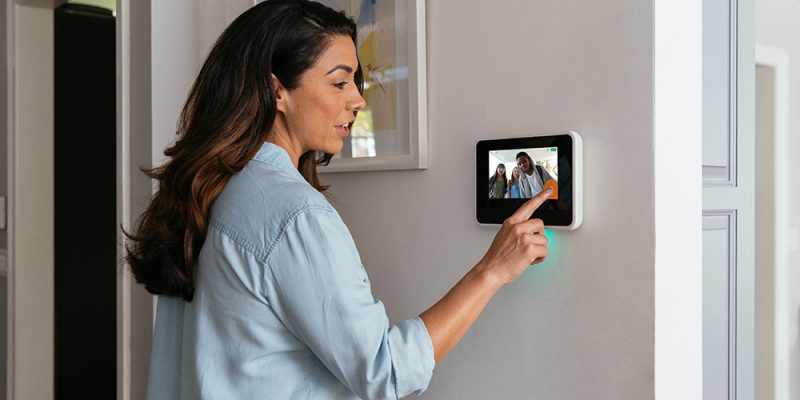Home security systems for residential complexes require specific compatibility features to function optimally within the existing infrastructure. Modern residential security solutions offer integration options that work seamlessly with building management systems while providing individual unit protection. The correct security setup balances building-wide protocols with personalized safeguards, creating layered protection without compromising convenience. When selecting compatible systems, residents should consider installation requirements, connectivity options, monitoring capabilities, and management features that align with personal needs and community guidelines for properties such as Springleaf Residence.
Flexible wireless solutions
Wireless security systems offer superior installation advantages for residents seeking non-invasive setup options. These systems connect components through radio frequencies rather than physical wiring, eliminating the need for wall modifications or extensive construction work. The modular nature of wireless setups allows for customized configurations that can adapt to different apartment layouts and security priorities. Residents benefit particularly from wireless options due to the building’s construction specifications and internal connectivity infrastructure. This gradual approach allows security investment to spread over time rather than requiring a substantial initial outlay.
Smart lock integration creates seamless access
Integrating smart locks with broader security systems represents a significant advancement in residential protection. These electronic entry systems replace or supplement traditional key mechanisms with digital authentication methods, including PIN codes, smartphone proximity, fingerprint recognition, or facial scanning. The most effective implementations maintain backup entry methods for redundancy during power or connectivity interruptions. The connectivity between smart locks and comprehensive security systems creates coordinated responses where door status affects overall system behaviour. Automation reduces human error factors in security maintenance while creating verifiable access records documenting all entry and exit events.
Camera placement optimizes coverage
- Entry point monitoring captures all access attempts through doors and windows
- Common area visibility ensures package delivery verification and visitor documentation
- Perimeter views create buffer zone awareness before potential issues reach residential units
- Interior selective coverage balances security needs with privacy considerations
- Low-light capability ensures continuous protection regardless of time or weather conditions
The strategic placement of security cameras creates comprehensive visual documentation while maximizing deterrent effects. Modern camera systems incorporate motion activation, person detection, and zone monitoring, reducing false alerts while ensuring that essential events receive immediate attention. The balance between coverage and privacy requires thoughtful planning, particularly when cameras might capture neighbouring units or shared spaces.
Notification systems provide timely alerts
- Real-time alerts deliver immediate information about security events requiring attention
- Customizable sensitivity settings prevent notification fatigue from false triggers
- Tiered urgency classifications help prioritize response actions appropriately
- Multiple delivery channels ensure notification receipt regardless of current activities
- Video verification capabilities reduce false alarms through visual confirmation
The notification framework determines how effectively a security system communicates potential concerns to residents. Advanced systems allow customized notification rules based on time of day, system status, and event type. This personalization ensures residents receive appropriate alerts without overwhelming communication that might lead to alert fatigue and decreased responsiveness over time.
The most effective remote interfaces balance comprehensive information with intuitive navigation that remains accessible during high-stress situations. Clear visual indicators of system status, straightforward control mechanisms, and logical information organisation ensure residents can quickly assess situations and take appropriate actions regardless of technical expertise. The remote functionality extends security benefits beyond physical presence, creating continuous protection that adapts to modern mobile lifestyles.

Comments